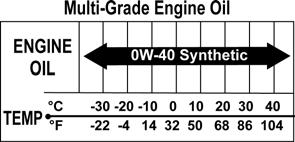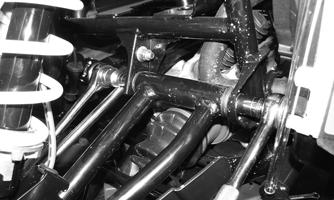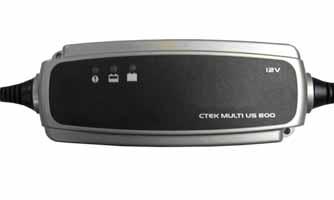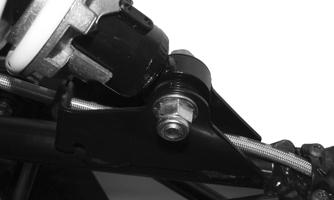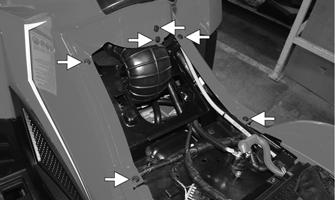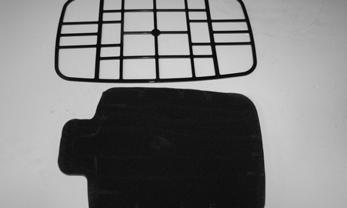
12 minute read
Fuel/Lubrication/Cooling
! WARNING
Whenever any maintenance or inspection is performed on the fuel system during which there may be fuel leakage, there should be no welding, smoking, open flames, etc., in the area.
NOTE: The manufacturer recommends the use of new gaskets, lock nuts, and seals and lubricating all internal components when servicing the engine/transmission.
SPECIAL TOOLS A number of special tools must be available to the technician when performing service procedures in this section. Refer to the current Special Tools Catalog for the appropriate tool description. NOTE: When indicated for use, each special tool will be identified by its specific name, as shown in the chart below, and capitalized.
Description p/n
Oil Pressure Test Kit 0644-495 Seal Removal Tool 0644-072 Tachometer 0644-275
NOTE: Special tools are available from the Service Department. TROUBLESHOOTING 1.Verify that the electric fuel pump is operating by listening for a “whirring” sound for several seconds after the ignition switch is turned to the ON position.
If no sound can be heard, see Electrical System - EFI
Sensors/Components. 2.Check for a flashing DTC (Diagnostic Trouble Code) on the LCD. If a code is flashing, see EFI Sensors/Components in Electrical System. 3.Make sure there is sufficient, clean gas in the gas tank.
Throttle Body
! WARNING
Whenever any maintenance or inspection is performed on the fuel system during which there may be fuel leakage, there should be no welding, smoking, open flames, etc., in the area.
REMOVING 1.Turn the ignition switch to the OFF position; then remove the ignition switch key.
2.Remove the seats and tool tray; then disconnect the battery. 3.Remove the storage compartment cover, front storage compartment, and side panels. 4.Loosen the clamps securing the air filter housing boot to the throttle body inlet and air box; then remove the boot from the throttle body. 5.Disconnect the IAT sensor connector from the air box. Remove the spark plug cap from the spark plug; then disconnect the primary lead from the ignition coil. Remove the crankcase breather hose from the bottom right side of the air box; then remove the air box assembly. 6.Slowly disconnect the fuel hose connector from the fuel rail. ! WARNING
Do not turn the ignition switch to the ON position with the hoses removed. Gasoline will be pumped by the electric fuel pump causing a safety hazard.
! WARNING
Gasoline may be under pressure. Place an absorbent towel under the connector to absorb any gasoline spray when disconnecting.
XR296A
7.Remove the screws securing the throttle actuator cover to the throttle body; then remove the cover.
Note the installed length of the throttle cable housing to the throttle body to aid in re-assembly. 8.Loosen the outer jam nut securing the throttle cable to the throttle body. Remove the throttle cable from the actuator arm; then route the cable out of the way.
9.Remove the MAP/TMAP sensor (A), fuel injector connector (B), ISC connector (C), and TPS connector (D).
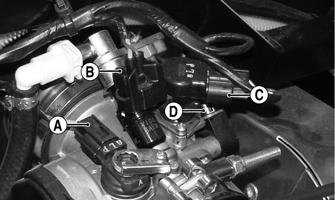
HDX136A
10.Loosen the clamp securing the throttle body to the boot; then remove the throttle body and rubber intake boots.
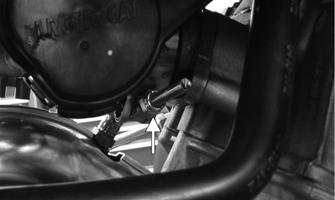
XR310A
11.Remove the two cap screws securing the intake pipe to the cylinder head. Account for O-ring. 12.Use tape to cover and seal the intake opening.
INSTALLING 1.Apply a small amount of grease; then place a new
O-ring in the intake pipe. Position the pipe onto the engine and secure with two cap screws. Tighten to 8.5 ft-lb (11.5 N-m). 2.Install the throttle body into the intake pipe and secure with the clamp. Tighten securely. 3.Connect the throttle cable to the throttle body and adjust throttle cable free-play (see Throttle Cable
Free-Play); then connect the fuel hose. 4.Connect the MAP/TMAP, ISC, and TPS connectors to the throttle body sensors. 5.Place the air box assembly into position. Connect the crankcase breather hose primary lead to the ignition coil and the spark plug cap to the spark plug. Connect the IAT sensor connector to the sensor.
6.Place the air box assembly to the throttle body connecting pipe into position; then secure the clamps. 7.Install the side panels, steering post cover, front storage tray, and cover. 8.Connect the battery (positive cable first); then install the seats making sure they lock securely in place. NOTE: If the throttle body, ECM, TPS, or ISC are replaced, the EFI system must be synchronized. Use the following procedure: 1.With the key off, depress the throttle lever to Wide
Open Throttle (WOT). 2.Place the ignition key in the ON position and wait for 10 seconds. 3.Release the throttle lever and wait an additional 10 seconds. 4.Turn the key to the OFF position and allow the gauge to shut off.
CAUTION
Any objects or liquid entering the intake opening will fall into the engine causing severe damage if the engine is turned over or started.
Throttle Cable Free-Play
To adjust the throttle cable free-play, follow this procedure: 1.Slide the rubber boot away; then loosen the jam nut from the throttle cable adjuster.
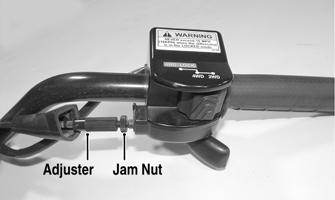
CF297A
2.Turn the adjuster until the throttle cable has proper free-play of 3-6 mm (1/8-1/4 in.) at the lever. 3.Tighten the jam nut against the throttle cable adjuster securely; then slide the rubber boot over the adjuster.
Gas Tank
! WARNING
Whenever any maintenance or inspection is made on the fuel system during which there may be fuel leakage, there should be no welding, smoking, open flames, etc., in the area.
REMOVING 1.Remove both seats and side panels.
2.Remove the rear rack and rear body panel (see Steering/Body/Controls). 3.Remove the upper cap screw securing the support bracket to the frame and the cap screw securing the gas tank to the support bracket. Loosen the upper shock mount bolt and pivot the support bracket down; then remove the vent hose from the gas tank.
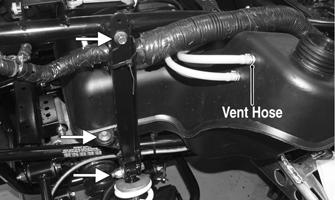
XR311A
CAUTION
The fuel line may be pressurized.
4.Place a shop towel under the fuel line connector at the fuel pump. Carefully rotate the connector to access the release tab. Disconnect the fuel line connector from the fuel pump.
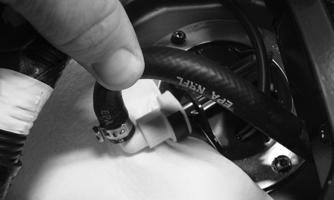
XR312
5.Remove the cap screw securing the left rear side of the gas tank to the frame.
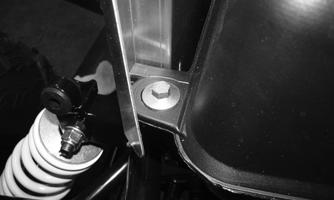
XR313
6.Note the wire harness routing of the ECM, Tilt Sensor, and Regulator/Rectifier. Remove the fasteners securing each component to the frame; then position each component up and out of the way.
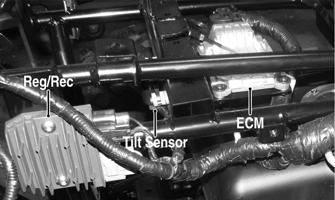
XR314A
7.Remove the gas tank. Note: Draining the gas tank of fuel will aid in removal.
CLEANING AND INSPECTING 1.Clean all gas tank components with parts-cleaning solvent. 2.Inspect all hoses for cracks or leaks. 3.Inspect tank cap and tank for leaks, holes, and damaged threads. 4.Remove the fuel level sensor/fuel pick-up assembly and inspect the fuel level sensor and fuel screen. NOTE: If the fuel level sensor has failed or may be faulty, see Electrical System — EFI Sensors/Components.
INSTALLING 1.Install the gas tank into the frame and guide the front mounting tabs into the rubber grommets that are installed in the frame. 2.As previously noted, route the wire harness into place; then install the ECM, Tilt Sensor, and Regulator/Rectifier to the frame. Connect the fuel line connector to the fuel pump.
XR314A
3.Tilt the support bracket up and secure it to the frame with the cap screw. Align the gas tank to the support bracket on the right and the frame on the left; then secure with the two cap screws. Using a new clamp, install the vent line to the gas tank. Using a new nut, tighten the upper shock mount to 50 ft-lb (68 N-m).

XR311A

XR313
4.Install the rear body panel and rear rack (see Steering/Body/Controls). 5.Install the seats.
Oil Pump
TESTING OIL PUMP PRESSURE NOTE: The engine must be warmed up to the specified temperature for this test. 1.Connect the Tachometer to the engine or utilize the
LCD (if equipped). 2.Connect the Oil Pressure Test Kit to the oil pressure test port.
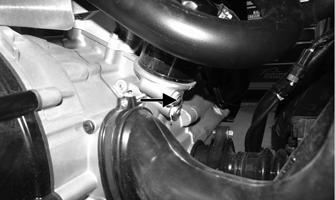
XR136A
NOTE: Some oil seepage may occur when installing the oil pressure gauge. Wipe up oil residue with a cloth.
3.Start the engine and run at 3000 RPM. With the oil temperature at 60° C (140° F), the oil pressure gauge must read as specified below:
Model Pressure
700
1.2-1.5 kg/cm2 (17-21 psi) NOTE: If the oil pressure is lower than specified, check for low oil level, or defective oil pump. NOTE: If the oil pressure is higher than specified, check for too heavy engine oil weight (see General Information/Foreword), clogged oil passage, clogged oil filter, or improper installation of the oil filter.
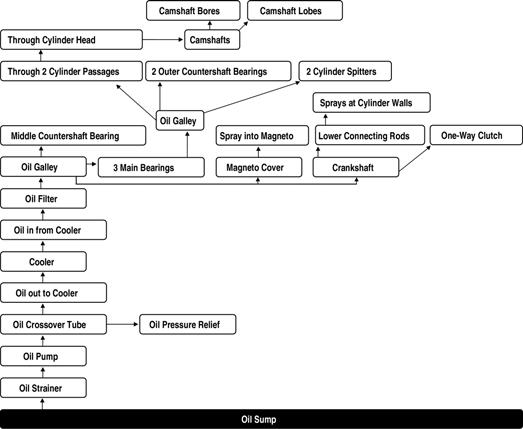
oil_flow_wt
Liquid Cooling System
Checking/Filling 1.Remove the rubber access plug from the front fender.
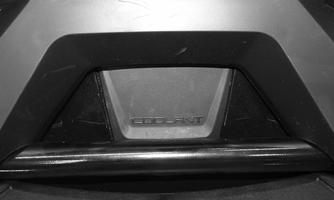
XR061
2.Carefully rotate the radiator cap counterclockwise to release pressure; then remove the cap.
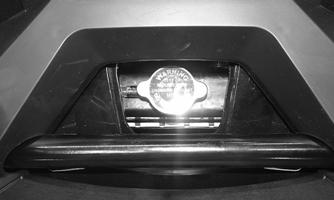
XR060
3.Add coolant as necessary; then install the radiator cap and access plug. NOTE: Use a good quality, biodegradable glycol-based, automotive-type antifreeze. When filling the cooling system, use a 60/40 coolant/water mixture or one which will satisfy the coldest anticipated weather conditions of the area in accordance with the coolant manufacturer’s recommendations.
! WARNING
Never check the coolant level when the engine is hot or the cooling system is under pressure.
CAUTION
After operating the ATV for the initial 5-10 minutes, stop the engine, allow the engine to cool down, and check the coolant level. Add coolant as necessary.
While the cooling system is being filled, air pockets may develop; therefore, run the engine for five minutes after the initial fill, shut the engine off, and then fill the cooling system to the bottom of the stand pipe in the radiator neck.
RADIATOR Removing 1.Drain the coolant by removing the drain screw found on the water pump. 2.Remove the front body panel/rack (see Steering/Body/Controls). 3.Remove the upper and lower coolant hoses. 4.Remove the cap screws and nuts securing the radiator to the frame.
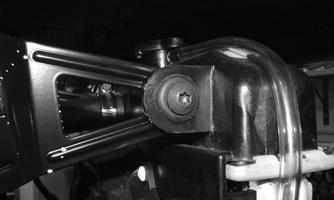
XR315
5.Disconnect the fan wiring from the main wiring harness; then remove the radiator/fan assembly and account for the grommets and collars. 6.Remove the fan/fan shroud assembly from the radiator. Cleaning and Inspecting 1.Flush the radiator with water to remove any contaminants. 2.Inspect the radiator for leaks and damage. 3.Inspect all hoses for cracks and deterioration. 4.Inspect all fasteners and grommets for damage or wear. Installing 1.Position the fan/fan shroud assembly on the radiator; then secure with existing hardware. 2.Place the radiator with grommets and collars into position on the frame; then install the cap screws and nuts. Tighten to 12 ft-lb (16.3 N-m). 3.Install the upper and lower coolant hoses; then secure with hose clamps.

4.Fill the cooling system with the recommended amount of antifreeze (see Periodic Maintenance/Tune-up). Check for leakage. 5.Loosen the bleed screw on top of the thermostat housing to allow any trapped air to escape. Check coolant level in radiator neck. This process may need to be repeated.
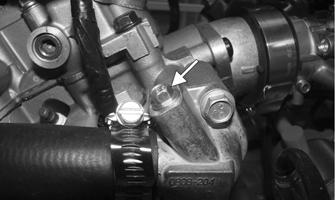
XR317A
6.Connect the fan wiring to the main wiring harness. 7.Install the front body panel/rack. THERMOSTAT Removing 1.Drain approximately one quart of coolant from the cooling system. 2.Remove the two cap screws securing the thermostat housing to the cylinder head. Account for an O-ring and a thermostat. Inspecting 1.Inspect the thermostat for corrosion or spring damage. 2.Using the following procedure, inspect the thermostat for proper operation:
A.Suspend the thermostat in a container filled with water.
B.Heat the water and monitor the temperature with a thermometer.
C.The thermostat should start to open at 146-151˚F.
D.If the thermostat does not open, it must be replaced. 3.Inspect all coolant hoses, connections, and clamps for deterioration, cracks, and wear. NOTE: All coolant hoses and clamps should be replaced every four years or 4000 miles (6400 km). Installing 1.Place the thermostat and O-ring into the thermostat housing; then secure the thermostat housing to the cylinder head with the two cap screws. 2.Fill the cooling system with the recommended amount of antifreeze (see Periodic Maintenance/Tune-up). Check for leakage.
COOLING FAN Removing 1.Remove the radiator (see RADIATOR in this sub-section). 2.Remove the fan assembly from the radiator. Installing 1.Position the fan assembly on the radiator; then secure with existing hardware. NOTE: The fan wiring must be in the upper-right position. 2.Install the radiator. WATER PUMP NOTE: The water pump is only serviceable as an assembly. Removing 1.Remove the radiator cap; then remove the water pump drain and drain the coolant.
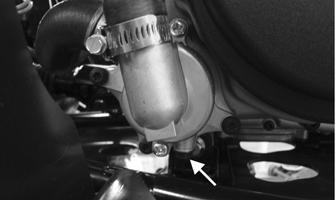
XR318A
2.Drain the oil from the engine/transmission. 3.Remove the left side engine covers and left side footwell. 4.Loosen the hose clamps and slide the clamps away from the hose ends approximately 2 in.; then remove both hoses from the water pump. 5.Remove the two cap screws securing the water pump to the engine; then remove the water pump.
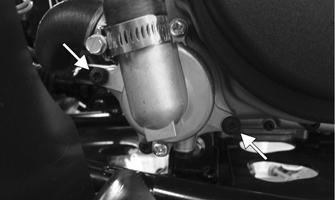
XR318B
Installing 1.Secure the water pump to the engine with the two cap screws tightened securely. Tighten securely to 8.5 ft-lb (11.5 N-m). 2.Connect the two coolant hoses to the water pump and secure with the clamps. Tighten securely. 3.Install the left side footwell and left side engine covers. 4.Fill the engine/transmission with the proper amount of recommended oil. 5.Fill the cooling system with the proper amount of recommended coolant (see Periodic Maintenance/Tune-up). Check for leaks.
Troubleshooting
Problem: Starting impaired Condition Remedy
1. Battery discharged or defective 1.Test, charge, and/or replace battery 2. Gas contaminated 2.Drain gas tank and fill with clean gas 3. Air filter/housing contaminated 3.Clean or replace air filter/housing or replace
Problem: Idling or low speed impaired Condition Remedy
1. Gas contaminated 1.Drain gas tank and fill with clean gas 2. TPS out of adjustment 2.Adjust TPS 3. Air filter/housing contaminated 3.Clean or replace air filter/housing or replace 4. ISC malfunction 4.Inspect/replace ISC
Problem: Medium or high speed impaired Condition Remedy
1. Gas contaminated 1.Drain gas tank and fill with clean gas 2. Air filter/housing contaminated 2.Clean or replace air filter/housing or replace

